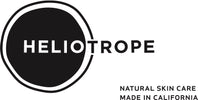Ever wondered if sunflowers know something we don’t? Their golden blooms hold a secret that’s becoming one of nature’s best kept skincare secret —sunflower oil. Packed with skin-loving nutrients, it’s nature’s way of helping you glow like the sun.
What Makes Sunflower Oil Special?
Sunflower oil isn't just for cooking. It's packed with vitamins and nutrients that your skin will love:
- Rich in vitamin E, an antioxidant that fights free radicals
- Contains linoleic acid, which helps maintain skin's barrier
- Lightweight and non-comedogenic, suitable for all skin types
- Naturally moisturizing without feeling greasy
From Field to Face: The Sunflower Oil Journey
The journey of sunflower oil from seed to skincare is pretty fascinating. Cold-pressed sunflower oil retains more of its natural goodness, making it ideal for skincare products.
As with many natural resources, the sunflower oil market can be influenced by global factors. Supporting brands that prioritize sustainability and ethical sourcing is a great way to help both the planet and small businesses.
At Heliotrope, we’re all about harnessing nature’s best in the gentlest way possible.
How Can You Use Sunflower Oil in Your Skincare?
Wondering how to incorporate this sunny superstar into your routine? Here are a few ways:
- As a moisturizer: Perfect for keeping skin hydrated without clogging pores
- In serums: Helps deliver other beneficial ingredients deeper into the skin
- For massage: Its smooth texture makes it great for working out those knots
Sunflower Oil in Heliotrope Products
We love sunflower oil so much, we've included it in several of our products. Here are a few you might want to check out:
|
Olive Leaf & Neroli Moisturizer This moisturizer combines sunflower oil with olive leaf and neroli for a hydrating powerhouse. It's perfect for sensitive skin and helps reduce inflammation while keeping your skin happy and hydrated. |
|
|
Cucumber & Botanical Healing Serum Our lightweight serum features sunflower oil alongside soothing aloe and refreshing cucumber. It's like a cool drink for your skin, perfect for those hot summer days or after sun exposure. |
|
|
This all-purpose lotion brings together sunflower oil with aloe, olive, and avocado for intense hydration. It's rich yet easily absorbed, making it ideal for daily use. |
Sunflower oil is proof that the simplest ingredients are often the most powerful. Try our eco-friendly refills to care for your skin and the planet in one go.
TIP: Bring back your empty bottles or jars to refill your Heliotrope products at a discount. It's our way of helping you save money while saving the environment!






Leave a comment